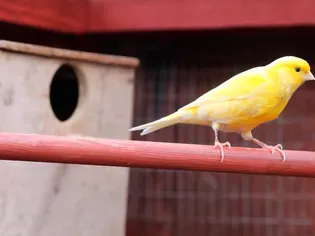Scarlet Macaw: Bird Species Profile
Updated on 05/26/24

Unveiling the Vibrant Charisma of the Scarlet Macaw: A Comprehensive Bird Species Profile
Embark on an avian adventure as we delve into the remarkable world of the Scarlet Macaw. With their captivating scarlet plumage and gregarious nature, these magnificent birds have captivated the hearts of bird enthusiasts and nature lovers alike. In this comprehensive species profile, we'll unravel the fascinating secrets behind this iconic bird, from its vibrant colors to its unique adaptations.
A Kaleidoscope of Colors: The Scarlet Macaw's Distinctive Plumage
The Scarlet Macaw is renowned for its unmistakable coloration. Its primary feathers burst with a brilliant shade of scarlet, while its wingtips and tail feathers fade into a deep indigo. This striking color combination is the result of the macaw's unique diet, which includes fruits and seeds rich in carotenoids. These pigments are absorbed into the bird's feathers and give them their vibrant hue.
Social Butterflies: The Scarlet Macaw's Communal Lifestyle
Scarlet Macaws are highly social creatures and form strong bonds with their flock members. They live in large colonies, often consisting of hundreds of individuals. Within these flocks, they establish complex social hierarchies and engage in various forms of communication, including vocalizations, body language, and preening rituals.
Aerial Artists: The Scarlet Macaw's Ability to Fly
Despite their large size, Scarlet Macaws are surprisingly graceful and agile flyers. They possess strong wings and a streamlined body that allows them to soar through the air with effortless ease. They travel in large flocks, forming characteristic V-shaped formations during flight.
Nurturing Parents: The Scarlet Macaw's Breeding Behavior
Scarlet Macaws are devoted and attentive parents. They form monogamous pairs and both sexes participate in the care of their young. The female typically lays two eggs, which are incubated for approximately 28 days. The hatchlings are altricial, meaning they are entirely dependent on their parents for food and protection.
Habitat and Distribution: Exploring the Scarlet Macaw's Home
Scarlet Macaws are native to the tropical rainforests of Central and South America. They are found in countries such as Mexico, Guatemala, Honduras, Nicaragua, Costa Rica, Panama, Colombia, Venezuela, Guyana, Suriname, and French Guiana. Their habitat preference includes lowland forests, riverine woodlands, and savannas.
Conservation Status: Protecting the Scarlet Macaw's Future
The Scarlet Macaw is listed as an endangered species by the International Union for Conservation of Nature (IUCN). Habitat loss, illegal trapping, and poaching pose significant threats to their survival. Conservation efforts are underway to protect remaining populations and ensure the preservation of this iconic bird.
Conclusion: A Bird of Wonder and Beauty
The Scarlet Macaw stands as a testament to the wonders of the natural world. Its vibrant plumage, social nature, and impressive flight abilities captivate observers and inspire awe. As we continue to delve into the secrets of this extraordinary bird, we deepen our appreciation for the intricate tapestry of life that surrounds us. Join us on this avian exploration and witness the undeniable charm of the Scarlet Macaw.
Explore More Pets

Small Bird Breeds
Gloster Canary: Bird Species Profile

Small Bird Breeds
Java Finch: Bird Species Profile

Small Bird Breeds
Zebra Finch (Chestnut-Eared Finch): Bird Species Profile

Small Bird Breeds
Alexandrine Parakeet: Species Characteristics & Care

Small Bird Breeds
Canary: Bird Species Profile

Small Bird Breeds
Lovebird (Pocket Parrot) Species Profile

Small Bird Breeds
A Guide to Pet Budgie Birds

Small Bird Breeds
Types of Small Parrots
